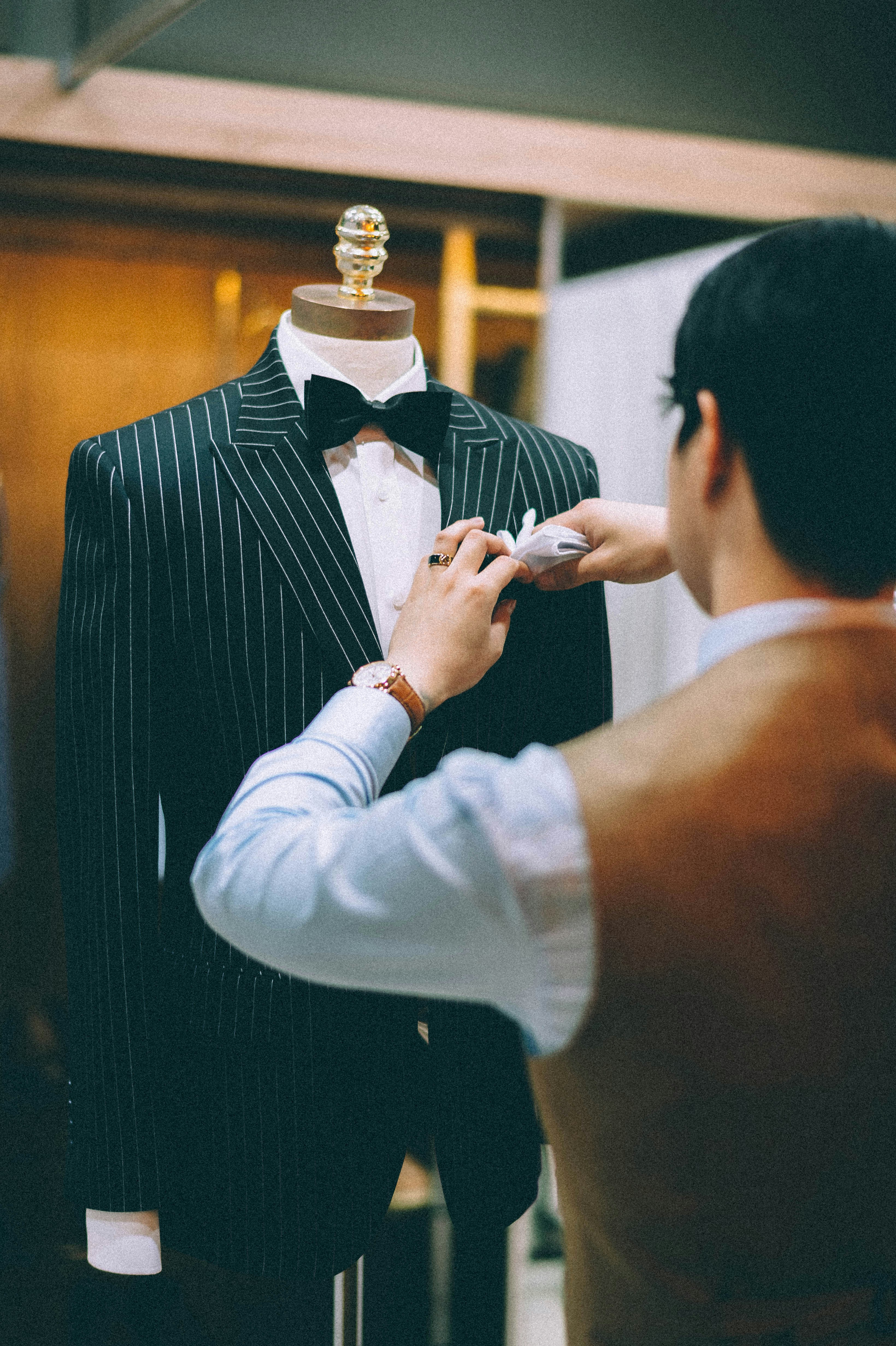Custom Suit Craftsmanship: Navigating the Bespoke Tailoring Journey

The Art of Bespoke Tailoring
Bespoke tailoring is an intricate and highly personalized process, representing the pinnacle of sartorial elegance. Unlike off-the-rack suits or made-to-measure options, bespoke suits are crafted entirely from scratch to fit your unique body measurements and style preferences. This journey not only transforms personal style but also significantly boosts confidence and presence.

Understanding the Bespoke Process
The bespoke process is a partnership between the client and the tailor. It involves numerous steps, each crucial in crafting a suit that perfectly embodies the wearer's vision.
Initial Consultation
The journey begins with an initial consultation. This is where you discuss your style preferences, lifestyle needs, and budget with the tailor. A good tailor will ask insightful questions to understand not just what you want, but what you need in a suit.
- Scenario: John, a young executive, visits a renowned tailor. He wants a suit that transitions smoothly from boardroom to cocktail events. The tailor suggests versatile fabrics and designs that align with John's professional yet stylish demeanor.
Choosing Fabrics
The selection of fabric is one of the most enjoyable parts of the bespoke process. Tailors often have hundreds of swatches, ranging from luxurious wools to cashmeres and silks.
- Consider the season and climate when selecting fabrics. For summer, light-weight wools and linens are ideal, while heavier wools are perfect for winter.
- Tip: Always feel the fabric in person. A fabric may look stunning in pictures but could feel different when touched.
Measurements and Fitting
Precision is key in bespoke tailoring. A series of detailed measurements ensure every inch of fabric aligns perfectly with your physique. This step often includes multiple fittings to refine the fit as the suit takes shape.
- Tip: Stand naturally during measurements; exaggerated postures can lead to poor fitting results.
Drafting the Pattern
The tailor uses your measurements to draft a unique pattern. This pattern serves as the blueprint for your suit, ensuring every cut of fabric aligns perfectly with your body contours.
Constructing the Suit
Construction begins with a 'baste' fitting—an initial assembly using temporary stitches to ensure fit and style align with expectations. Adjustments are common at this stage, based on your feedback.
Final Fittings
After adjustments, final fittings are scheduled to ensure everything fits as intended. Minor tweaks ensure optimal comfort and appearance before the suit is finally completed.
Enhancing Personal Style
A bespoke suit isn't just about fit; it's about conveying personal style. Choose details like lapel styles, pocket designs, and linings that reflect your personality.
- Example: Mark opts for bold linings and contrast stitching to inject subtle personality into his otherwise classic navy suit.
Communicating with Your Tailor
Effective communication with your tailor is essential throughout the bespoke journey. Provide clear feedback at each fitting, and don't hesitate to voice concerns or preferences.
- Bring reference photos or style inspirations to consultations.
- Be honest about comfort—suits should be flexible enough for daily activities.
The Confidence Boost
A well-fitted bespoke suit is transformative. It enhances posture, sharpens silhouette, and exudes confidence—qualities that transcend occasions from formal gatherings to casual outings.
Your investment in a bespoke suit is an investment in self-presentation—a testament to craftsmanship and personal expression wrapped in luxury.
 Modern Knowledge House
Modern Knowledge House